New venue, enhanced opportunities - An interview with Plastindia President Subhash Kadakia
Plastindia, India's biggest plastics exhibition is all set to make a grand opening on February 5 at a newly built venue in the vibrant state of Gujarat. Considered to be the flagship event of the Indian plastics industry, the huge trade fair is held every three years and has had an enviable track record ever since its first edition in 1990. Plastindia 2015 will showcase the latest in plastics technology, processes, machinery and products, and at the same time emphasize responsible plastics management, recycling and sustainable use of plastics.
In an exclusive interview with POLYMERUPDATE, Subhash Kadakia, President of Plastindia Foundation, has furnished a peek into the vast opportunities that lie within the plastics expo and has answered a host of questions pertaining to issues surrounding the mega event.
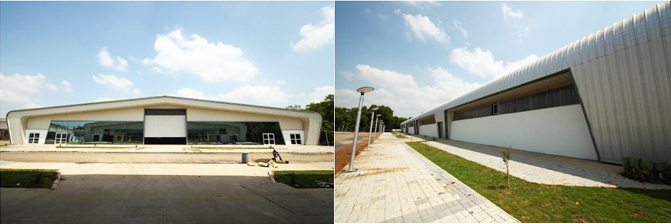
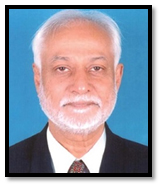
Mr. Subhash Kadakia, President – Plastindia
Interview of Subhash Kadakia (SK) with Lekhraj Ghai (LG):
LG: There has been a mixed response so far from the industry regarding the change in venue of Plastindia 2015. What measures are being taken by the Plastindia Foundation to instill confidence among those that doubt this decision?
SK: Although there has been a change in the venue, I do not believe that the industry has lost confidence in Plastindia. This is evident from the fact that the entire exhibition space has already been booked and there is a waiting list of exhibitors that want to participate in Plastindia 2015. If there is any doubt about the soundness of this decision, it may be due to ignorance. The new venue for Plastindia in Gandhinagar is made only for Plastindia and other such exhibitions, and is tailor-made to our requirements, whereas Pragati Maidan, which is managed by India Trade Promotion Organisation (ITPO), is a multi-purpose venue. Those who have visited the new Gandhinagar venue, which include our international partners, have been not only impressed by the venue but by the city as well. Gandhinagar's broad roads, greenery and infrastructure have left a lasting impression, and the visitors have expressed ample confidence that the venue can be developed to equal international standards.
Besides, the Plastindia Foundation together with the Government of Gujarat has thus far done an excellent job in highlighting the advantages that Gandhinagar possesses and the logistics and accommodation facilities that will be provided to the exhibitors and visitors.
Based on the positive feedback garnered from our international partners as well as the confidence expressed by the domestic plastics industry fraternity and the fact that Plastindia 2015 is already fully booked, I can safely say that any doubts that might have arisen due to the change in venue have been sufficiently addressed.
LG: How does Plastindia Foundation intend to assist those who have already made their travel and stay arrangements in New Delhi?
SK: The change in venue was formally announced a good 4–5 months before the exhibition begins. Those exhibitors that make their travel and stay arrangements well in advance are often large companies, while small and medium enterprises often make their bookings at a later stage. Normally, there are no cancellation charges if the bookings for travel/stay are cancelled 30 days prior and a full refund can be obtained. Nevertheless, we are offering a 20 percent incentive in the rate for all domestic exhibitors so that any inconvenience due to the change in venue can be compensated for.
LG: Also, participants from North India are particularly unhappy as most of their clients belong to Delhi/NCR? How are you addressing their concerns?
SK: In a large country like India it is sometimes difficult to appease everyone. At the same time, we need to consider the fact that about 60 percent of the plastics industry in the country is concentrated in the state of Gujarat. New Delhi, as the venue for Plastindia, had its own big-city problems such as that of heavy traffic. By moving the exhibition to Gandhinagar, we have tried to strike a balance after weighing all the pros and cons.
LG: Have the other preparations for Plastindia, such as the construction underway at the venue, progressed as per schedule?
SK: All preparations for Plastindia 2015 are on track and the venue is almost ready. At present, a beautification programme is being undertaken at the venue, which should be completed by the end of this month. Moreover, the Vibrant Gujarat Summit and the Pravasi Bharatiya Divas have been held at the same venue before Plastindia 2015. So obviously, we have an idea about the venue's efficiency and the facilities provided beforehand. If in case, there are aspects that can be improved, we have ample time to work towards them.
LG: Considering that Gandhinagar/Gujarat is not as well-known as New Delhi in the international market, how have you justified this move to the foreign partners of Plastindia?
SK: I believe that the Gandhinagar venue has been marketed well thanks to efforts of the Government of Gujarat together with Plastindia's expertise. Furthermore, the Plastindia website provides clear and up-to-date information about the venue and its layout in addition to information on the facilities, accommodation, and travel by air and road. Gandhinagar is just a few hundred kilometers from New Delhi, and the venue change shouldn't trouble international exhibitors. In fact, the dry port in Gujarat is not far from Kandla, offering logistics advantages to international exhibitors. Moreover, in the past we have had complaints about the power issues at Pragati Maidan. Now that we have offered them a better venue, the international exhibitors and our foreign partners are pretty much pleased.
LG: Has there been any change in space allocations in the new exhibition center at Gandhinagar?
SK: The space allocations at the new venue are essentially the same but the layout is definitely better than that at Pragati Maidan. As per the feedback from our exhibitors, we have designed the new venue in such a way that all exhibitors are accommodated comfortably. The layout is in a rectangular form and not in a zig-zag pattern like at Pragati Maidan. The uniform and well-designed layout will ensure that there is ease of movement for the visitors and there will not be instances of some exhibitors left out in a corner, which used to be the case at Pragati Maidan. Also, as per Plastindia norms, machinery, raw material and processed goods have individual halls. I believe that the uniform layout and the ease of access at the new venue will ensure satisfaction among all the participants.
LG: What is the expected number of exhibitors and visitors in Plastindia 2015?
SK: There are 15 halls in total and the number of exhibitors range between 1500 and 2000. Of course, there is an additional 4%-5% in the waiting list and I am sure that even they will be accommodated owing to the more efficient layout in the new venue. Plastindia is usually visited by more than 150,000 people and we expect this trend to continue in Plastindia 2015 as well. In fact, looking at the rush of exhibitors and since many visitors are invited by the exhibitors themselves, it will not be a surprise if the actual number surpasses the 150,000 business visitors mark.
LG: How much revenue will be generated by Plastindia 2015?
SK: The gross revenue generated by Plastindia 2015 will be 20 percent less owing to the incentive given to the domestic exhibitors. The net revenue that will be generated is expected to be at par with that generated in past Plastindia exhibitions.
LG: What are your thoughts on the recent postponement of India Plast 2015, which was scheduled to be held at the same venue just days before Plastindia?
SK: As is evident on their website, India Plast has been postponed. There are many exhibitions that are organized every year and there are times when two or more exhibitions coincide. However, the success of an exhibition depends on its popularity. The general idea behind any exhibition is to provide marketing opportunities for exhibitors and information for visitors and entrepreneurs. At the same time, if there are too many exhibitions occurring concurrently, it destroys the purpose of the exhibition, which is why Plastindia is held once in three years. There exists an understanding among all major exhibitions and trade shows all over the world that ensures that no two exhibitions coincide. We have such an understanding with major exhibitions in Europe and South East Asia. So, when Plastindia moved to Gujarat, the Government of Gujarat realized that here was no need to hold yet another exhibition at the same venue, which could be the reason why India Plast 2015 has been postponed.
LG: Does this year's change in venue mean that Plastindia will always be held in Gandhinagar? Conversely, considering the often-talked-about power problems at the old venue, does this move mean that Plastindia will never be held at the Pragati Maidan Fairgrounds in New Delhi?
SK: There were certain issues that Plastindia had with ITPO in 2012, which is one of the reasons why we requested the Government of Gujarat to see if there was another venue available. However, things didn't fall into place immediately and many in the industry felt that the new Gandhinagar venue would not be ready or would not be able to comply with all our requirements in time. So, we decided to stick with the New Delhi venue. However, later, the Government of Gujarat declared that the venue has progressed as per schedule and is as per our requirements and wished that Plastindia be held at the newly constructed venue. Seeing the progress at the venue and its advantages, the Plastindia managing committee concluded that Gandhinagar will be the venue for Plastindia henceforth.
In response to your question, I would like to point out that the term of a Plastindia President and the managing committee is of three years and ends with the exhibition. As such, it will be up to the next managing committee and the next Plastindia President to decide where the next edition of Plastindia will be held. Of course, there are aspects that will be considered, such as the success of Plastindia 2015 at Gandhinagar, the existing facilities and the logistics and other services that are on offer. After weighing all such aspects, the Plastindia managing committee will decide whether to hold the exhibition at Gandhinagar or New Delhi or at an entirely new venue.
LG: According to a recent draft notification issued by the Ministry of Health and Family Welfare (Department of Health and Family Welfare), the Central Government has called for a ban on the use of plastic containers for packaging of pharmaceutical products such as syrups and liquid orals. What are your thoughts on this Central Government initiative? Does the Plastindia Foundation support or oppose this move?
SK: It is not a mandate of Plastindia Foundation to suggest policy measures to the government. There are other associations who are actively involved whenever such situations arise. Of course, we provide all the necessary aid to the associations so that they are able to explain to the government that it is not plastics that are harmful but the way in which they are handled. Plastic is used all over the world in a manner in which it causes no environmental or health issues. The per capita consumption of plastics in India is about 10 kg while in other countries it is about 100 kg. With the depletion of natural resources, plastics is the only material that has properties that can meet the varied requirements and needs of today's world. Plastics is the best material available for packaging and with the growing population in the country the use of plastics is only going to increase. The government is aware of this fact and it is up to the associations in the country to justify it to the government.
Plastics is a completely recyclable material and awareness needs to be brought about the benefits of plastics recycling. Plastindia has a division for solid waste management and we are doing our best to spread awareness that just like paper and glass, plastics can be easily recycled and it is imperative that plastics waste is recycled and not misused or mishandled.
LG: What will be the total loss to the plastics industry if the ban is implemented?
SK: The plastics associations of the country are doing a good job of explaining matters to the Central Government so that the ban can be avoided. There could be a temporary decline in consumption owing to the news that the government is considering the ban. Since I am not directly involved, I will not be able to comment more on this matter.
LG: How will Plastindia 2015 catalyze the growth of the plastics industry in India, particularly the packaging and the automotive industries?
SK: Plastics consumption in India is steadily growing and is expected to reach double digits soon. By 2020, India will be consuming 20 million tonnes of plastics per year. This will be a huge driver for the growth of the plastics industry in India. The availability of raw material and contemporary technology will be crucial to the growth. Plastindia has a program called PLASTWIN where international and domestic entrepreneurs come together and exchange their technological advances so that innovative ideas can be incorporated and developed to enhance the lives of people by the use of plastics.
LG: What are your thoughts on the Prime Minister's Make in India campaign?
SK: Self-reliance has been the policy of this country right from the beginning. It has always been understood that if the country wants to make progress it needs to be self-reliant. "Make in India" is all about self-reliance. However, "Make in India" does not imply that we refrain from bringing in the new technology, which are available in other countries. India is endowed with an educated workforce and raw material is also readily available. If the latest technology can be brought in, it will save a lot of time and other resources. We cannot afford to distance ourselves from the world just because we want to be self-reliant.
LG: But, what about the imports from China?
SK: Import from China is gradually becoming uneconomical. However, there is a deficiency of raw material in India, which needs to be supplemented. If certain products are not available in India, we have no choice other than importing those from other countries. Once India is self-sufficient in those products there will no longer be a need to import as the cost of imported goods is always higher than those that are locally made.
LG: What are your thoughts on the recent slump in international crude oil prices?
SK: I believe that crude oil prices going down is good news for the plastics industry. The country can now save a lot in foreign exchange. Thanks to the shale revolution in the USA, dependency on crude oil has reduced as there are now alternate raw material sources for plastics. However, it is imperative that the prices stabilize.
END
For further information, commentary and interviews, please contact us on +(91-22) 61772000 and info@polymerupdate.com

ABOUT POLYMERUPDATE

POLYMERUPDATE is an online destination for the plastics and petrochemical industry, which specializes in providing market- moving information and pricing data on petrochemical products and industrial polymers. Global players seeking polymer market
intelligence rely on the real-time news and price alerts provided on POLYMERUPDATE for making informed business-critical decisions. POLYMERUPDATE covers a whole spectrum of products such as Crude oil, Naphtha, Aromatics, Olefins, Polyolefins and Petrochemical Intermediates. With almost two decades of extensive experience in garnering and providing business-critical content, POLYMERUPDATE has expanded its readership to more than 60 countries in the world and its pricing methodology is considered as a benchmark across South Asia. POLYMERUPDATE interviews and articles are a rich source of information on the latest trends in the chemical and petrochemical industry.
Visit POLYMERUPDATE on the internet at www.polymerupdate.com
Sign up for our newsletters
More like this
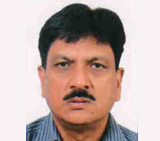
PET for pharma: a boon or a curse? – An interview with PCMA President Biswajit Ghosh Read More
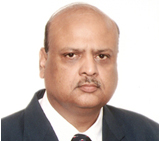
Quality upgradation and skill development crucial for plastics growth – An interview with AIPMA President Rituraj Gupta Read More
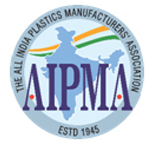
Apex plastics body AIPMA urges government to reconsider PET ban – A POLYMERUPDATE special report Read More
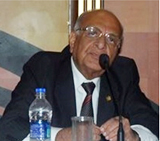
PlastIndia move official, Counsil explains bold decisions - An interview with NEC Chairman J.R. Shah Read More

SABIC in India - A new era of strategic partnership Read More



